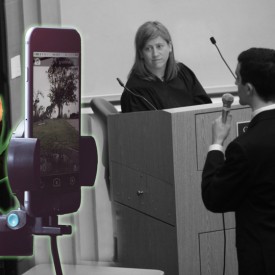 Software audit tools are a good start…but
Software audit tools are a good start…but
Software audit tools are a good starting point when reviewing healthcare billing documents, but they are not a complete solution. Such tools have obvious limitations including an inability to definitively evaluate levels of service being reported and an inability to read and evaluate clinical documentation. Such tools can also potentially be confounded by improper coding, whether the improper coding was a result of an error, a result of ignorance of proper coding protocols and methodologies, or the result of intentional deception in an effort to garner more remuneration that would otherwise be proper.
I recently reviewed a surgeon’s bill related to a surgical arthroscopy on the knee. The surgeon had billed for the surgical arthroscopy as well as a diagnostic arthroscopy, and had also billed for the services of the surgical assistant related to both procedures.
It is a clear violation of CPT coding protocols to report a diagnostic arthroscopy and a surgical arthroscopy to the same knee at the same operative event, as the diagnostic arthroscopy is a lesser included component of the surgical arthroscopy. The improper coding of both the surgeon’s services and those of his assistant related to the diagnostic arthroscopy resulted in $8,370.00 in inappropriately billed services.
I obviously recommended no consideration of these inappropriate charges. The patient’s attorney clearly wanted those charges included as part of the submitted medical specials, so he apparently asked the surgeon for some help. The surgeon then submitted the results of a software audit he had processed through a software audit tool being widely used in the healthcare and insurance industries. The EOB reflected approved charges for both procedures. This formed the basis for the attorney’s rebuttal.
In reviewing the EOB, it became clear that the information as submitted to the audit tool had confounded the software. The surgeon had appended a “-59” modifier to the base CPT code for the diagnostic arthroscopy. In doing so, he was attesting to the diagnostic arthroscopy being a distinct and separate procedure. This, unfortunately, was apparently enough to defeat this piece of software. Perhaps the software had flagged this as a potential issue, but if so the person responsible for then reviewing the flag failed. In any case, the system failed.
Perhaps the software audit tool read the inclusion of the “-59” modifier as an indication that the diagnostic arthroscopy was done to the knee that was not surgically repaired. This is a flaw in the programming, as in such cases a second modifier, indicating left or right (knee) should also have been added to the base CPT codes.
A quick review of the Operative Report again confirmed that both procedures had been directed to the same knee.
The bottom line is that software audits can be a useful component, but only a component, of any comprehensive review of healthcare billings and the associated clinical records.






 May 28
May 28








